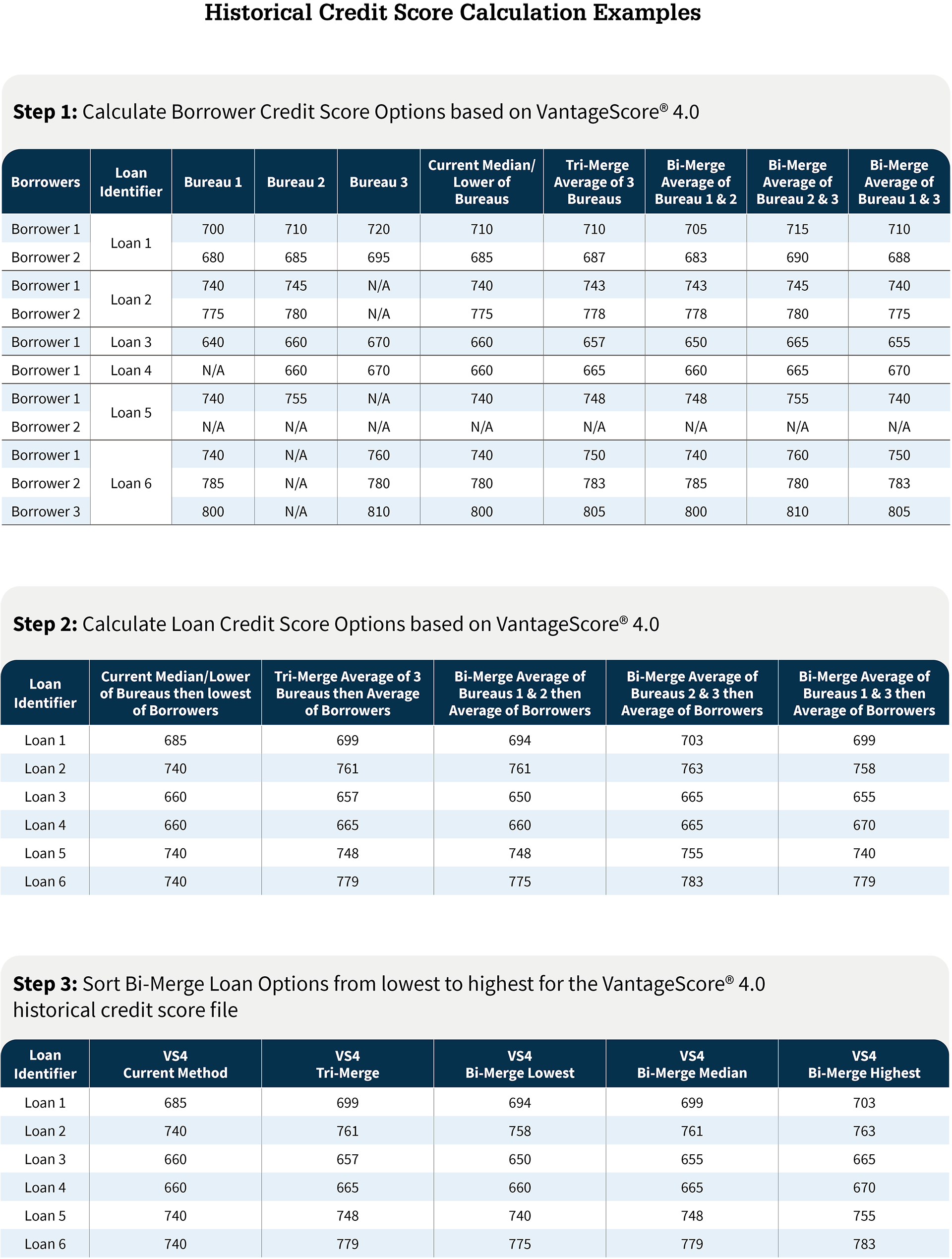Historical Credit Score Files
To support the industry in transitioning to the new Credit Score models, Fannie Mae is providing anonymous historical credit scores based on VantageScore® 4.0.
Three data files are available representing:
- Loans acquired by Fannie Mae from approximately April 2013 to March 2023 (which closely aligns with applications/originations from approximately January 2013 to December 2022).
- Note: A key component of the VantageScore 4.0 credit score model is its use of trended data which is only available across all three credit bureaus starting from January 2013.
- Values based on information provided by the three bureaus (tri-merge) and various combinations of two bureaus (bi-merge).
Access the Data
To access the historical credit score files, click on the Register/Login to download link provided below. New users must first register and accept the Terms and Conditions and privacy notice before downloading the files. Data Dynamics® users may use their existing credentials to log in to access the files.
Historical Credit Score Files
Register/login to download VantageScore 4.0 historical credit score files for Mortgage-Backed Securities (MBS) Disclosures, Historical Loan Performance, and Credit Risk Transfer (CRT) Datasets.
Download Historical Credit Score Files
Note: Due to the file size (10M+ records), files are meant to be consumed by advanced analytics programs.
Disclaimers: When using the historical credit score files, it is important for users to understand the following information on the data contained in the files.
- The credit scores contained in the historical credit score files are generated by Equifax, Experian, and TransUnion based on the archive credit data from that credit bureau. We do not make any representations or warranties concerning the quality, accuracy, or completeness of the historical data generated by these third parties or the adequacy or suitability of the historical credit score files for any use or purpose.
- The type, content, format, structure, and quality of this data depends on how this data was collected and stored at the specific time the archive was created. This may be a different time than the time at which the credit report used at origination was generated for the loans included in the files. This difference in timing may lead to differences in credit scores between the archive credit data and the origination credit data.
- Archive credit data may not reflect more recent updates in the content and structure of credit reports. For instance, changes over time to the reporting of medical collections, tax liens, judgments, student loan forbearance, and rental payments (among other things) will not be reflected in scores generated based on credit data archived before these those changes went into effect.
- The historical credit score files must not be used to, directly or indirectly, identify any specific individual. Users must comply with the Terms and Conditions, which contain important information on the permitted uses and restrictions for the data contained in the historical credit score files.
How to Use the Historical Credit Score Files with the Disclosure Datasets (MBS, Historical Loan Performance and CRT)
When using the historical credit score files, it's important for users to understand that the “common” Loan Identifier matches the Loan Identifiers published in our disclosure datasets. The Loan Identifier does not correspond to the Fannie Mae Loan Number or Lender Loan Number. The historical credit score files are primarily intended to be combined with the MBS disclosures, or Historical Loan Performance or CRT datasets to perform the analytics needed to implement VantageScore 4.0.
What Loan Identifiers Will Match
| Historical Credit Score Loan Identifier | GSE Loan Number | Lender Loan Number | MBS Disclosures Loan Identifier | Historical Loan Performance Dataset Loan Identifier | CRT Dataset Loan Identifier |
|---|---|---|---|---|---|
| 5968784709 | |||||
| 100023020488 | |||||
| 136626329 |
|
Historical Credit Score Loan Identifier 5968784709 GSE Loan Number Lender Loan Number MBS Disclosures Loan Identifier Historical Loan Performance Dataset Loan Identifier CRT Dataset Loan Identifier |
|
Historical Credit Score Loan Identifier 100023020488 GSE Loan Number Lender Loan Number MBS Disclosures Loan Identifier Historical Loan Performance Dataset Loan Identifier CRT Dataset Loan Identifier |
|
Historical Credit Score Loan Identifier 136626329 GSE Loan Number Lender Loan Number MBS Disclosures Loan Identifier Historical Loan Performance Dataset Loan Identifier CRT Dataset Loan Identifier |
Note: One additional attribute (besides the Loan Identifier) will be required to match the loan information across both data sets.
MBS Disclosures Dataset
VantageScore 4.0
Access the MBS Disclosures Dataset (available in PoolTalk®).
Historical Loan Performance Dataset
VantageScore 4.0
Access the Single-Family’s Historical Loan Performance Dataset (available in Data Dynamics®).
CRT Dataset
VantageScore 4.0
Access the CRT Dataset (available in Data Dynamics).
Need help?
For more information, reach out to your Fannie Mae representative or Contact Us for Technology Support.

